Got a Memorial Day story for you Ags:

Burning the Colored Orphanage during the draft riots
On the night of July 13, 1863, the night sky of New York City was illuminated like never before, at least until the invention of the electric light. Multiple fires were scattered throughout the city as about 50 buildings burned from fires set by Irish immigrants rioting against the draft law recently passed by congress and enacted locally with a lottery. One of the buildings burned that night was the print shop where a 16-year-old Irish boy, Jimmy Nugent worked. But this was a tragedy for more than just Jimmy. He was the primary income source for his mother, Ann Nugent and his seven other siblings, as their husband and father had died before the war in 1857.
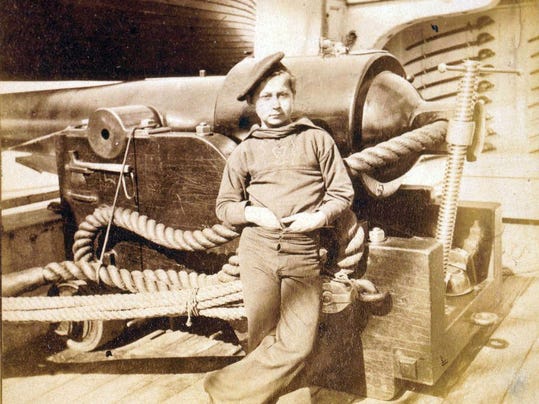
Young Union Tar
Wandering the city looking for a new job, Jimmy happened upon the Navy Shipyard in Brooklyn and no doubt some shady recruiter. Jimmy and his mom saw it as a perfect opportunity, under the circumstances. With his mother's permission, 5'2" grey-eyed Jimmy became a second-class boy in the United States Navy. He would earn $8 per month and if assigned to a blockader, the opportunity to earn much more lucrative prize money from any captured ships.
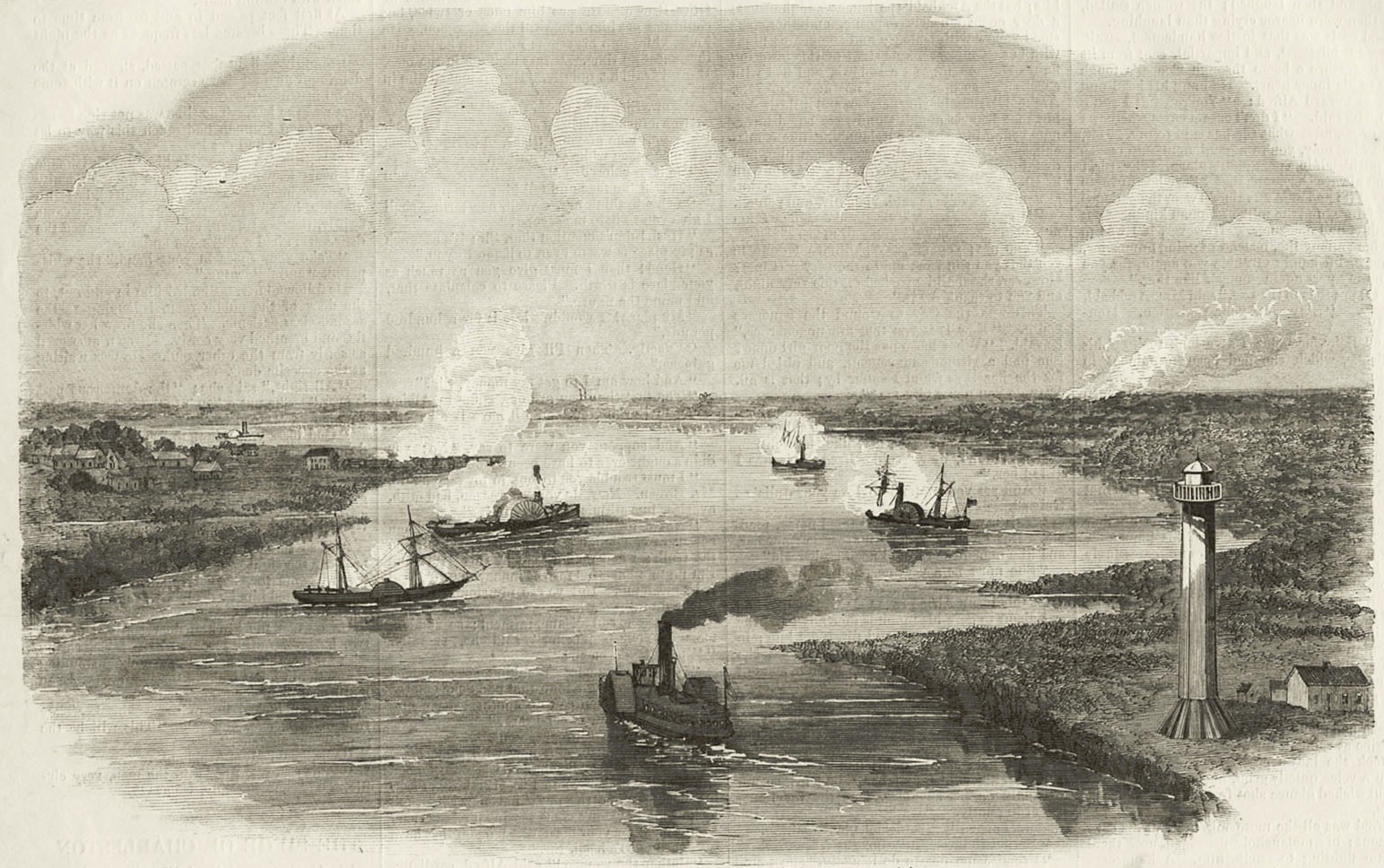
The Battle of Sabine Pass (the USS Granite City is the ship on the far left)
Jimmy was assigned to the USS Granite City. The Granite City was a 160-foot-long side wheeler that had arrived at the Shipyard on April 27, 1863. She had been a former Confederate blockade runner captured near the Bahamas on March 22, 1863 by the USS Tioga. She had netted $55,000 for the crew of the Tioga in the New York Prize Court and as Jimmy joined the navy, she was being armed and outfitted in the Brooklyn Shipyard for duty in the Western Gulf Squadron, under the command of Acting Master Charles Lamson. She mounted six 24-pound howitzers and a 12-pound rifle (probably a Dahlgren). The ship arrived in New Orleans on August 27, 1863 and was given a blockade assignment. Within days of Jimmy's initial career as a blockader, the Granite City captured a blockade runner. Jimmy proudly wrote home to Ann, "We have taken a prize worth $100,000 dollars and my share will be $500 dollars when confirmed." That was more than five years wages for the second-class boy.
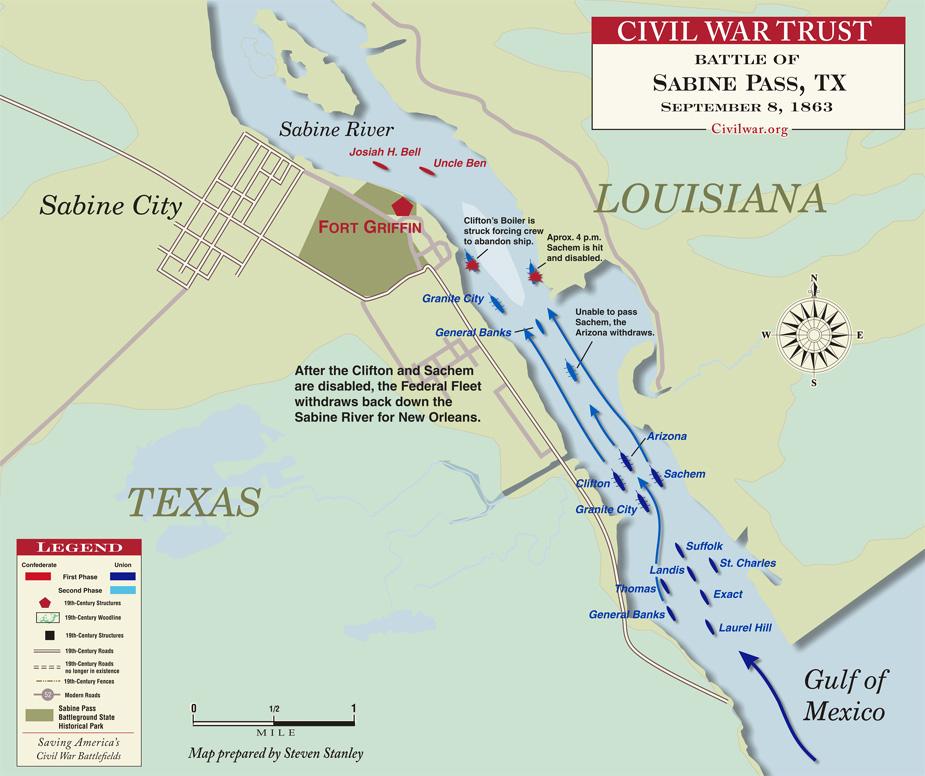
Map of the Battle of Sabine Pass
But Jimmy's first blockade career was short lived as the Granite City was better suited for action than blockade duty. On September 4, 1863 she left New Orleans bound for Sabine Pass and Nathaniel Banks' planned invasion of Texas. On September 8, 1863 four gunboats steamed into the shallow channels of Sabine Pass. The Granite City steamed up the Texas channel behind the USS Clifton. Precision fire from the lone Confederate fort guarding the pass quickly disable the lead boats the Clifton and Sachem and the following Granite City and Arizona had to back down their respective channels and barely got over the outer oyster reef at the head of the pass as the tide receded. It was a resounding defeat for the Federals and it made quite an impression on the young mind of Jimmy Nugent and raised some doubts. Writing to an uncle he said, "Dear Uncle tell poor mama that if ever i get home again that i will not leave so quick as i did before."
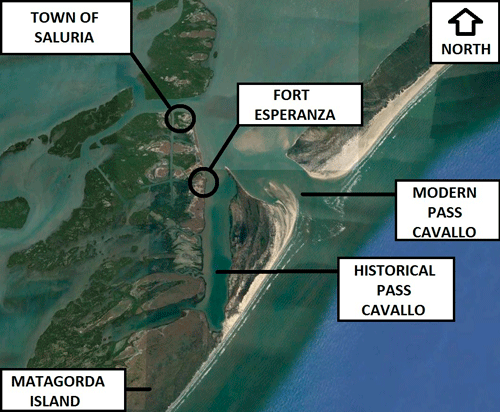
Satellite Imagery of the Pass Cavallo area and Civil War-era Fort Esperanza
For the next eight months, Jimmy was relatively safe as the Granite City resumed blockade duty and occasionally supported the landing of shore parties. In addition, the ship's machinery was defective and she spent extensive time in New Orleans for repairs. She captured the schooners Anita on October 27, 1863 and the Amelia Ann on November 16. The day after capturing the Amelia Ann, they captured the bark Teresita. Granite City supported two landings of troops on the Texas coast in December and January. With USS Sciota, she shelled Confederate cavalry off Pass Cavallo on December 31, 1863, allowing Union reconnaissance forces to land successfully and nearly three weeks later on January 19, 1864 she participated in an expedition to Smith Point, TX, to land a few hundred troops and then supported them by shelling shore positions.
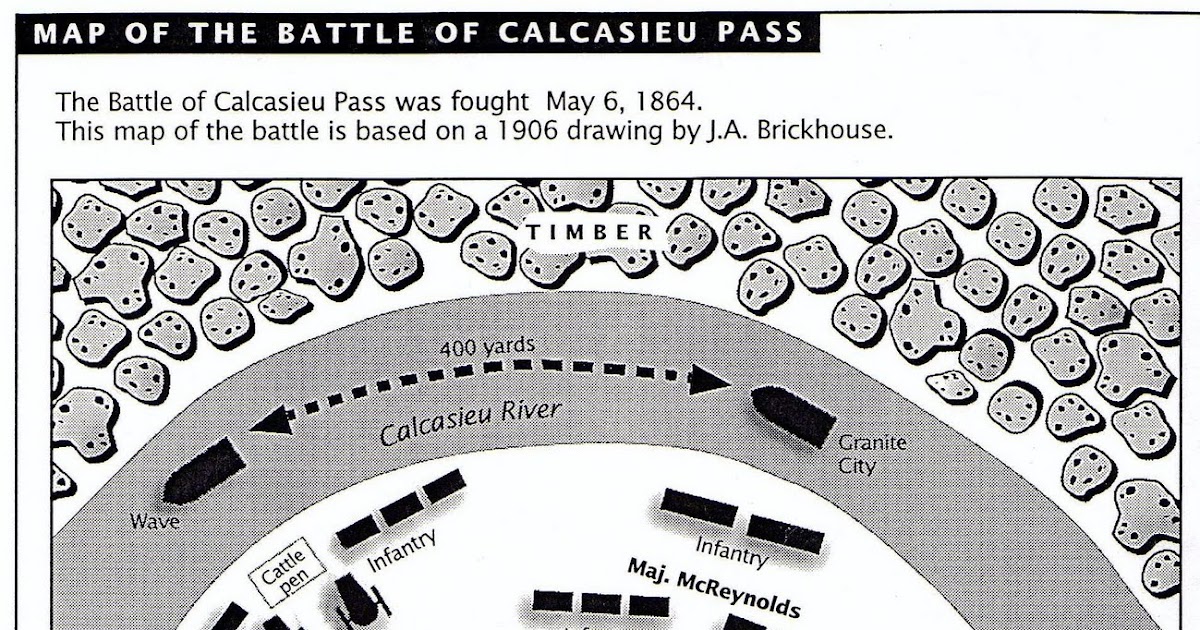.jpg)
The Battle of Calcasieu Pass
On April 15, 1864, Granite City and USS Wave were sent up the Calcasieu River just east of Sabine Pass to rescue Unionist refugees and the crops they had stolen from Confederate sympathizers in the area. The Confederate farmers didn't take too kindly to this thievery and alerted Confederate forces in the vicinity. The Confederates sent a small regiment and a battery of artillery to attack the two boats on the river. Early on May 6, the Confederates snuck up to the river's edge where the two gunboats were anchored and open fire with artillery and musketry. Most of the sailors were still in their bunks when the surprise attack occurred and they attempted to get to their battle stations amid the hail of lead balls and exploding shells that penetrated Granite City's hull. In short order, 36 bodies lay dead or writhing in agony on the two boats and the ships had to strike their colors to end the slaughter. The surviving 111 sailors including Jimmy Nugent were captured and marched to Texas and prison at Camp Groce on the Liendo Plantation near Hempstead.

Camp Groce
The next eight months would not go like the last 8 months for Jimmy. Camp Groce had been a training site in 1861 for Confederate soldiers but after training was completed it was turned into a prison camp for the sailors and marines captured at the Battle of Sabine Pass. After his release from the prison John Read the paymaster of the Granite City described it:

Union Prisoners at Camp Groce
Soon after arriving at Camp Groce Jimmy wrote a final letter to his mother:
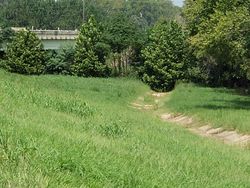
Camp Groce Cemetery today, Jimmy's probable final resting place
Most likely Jimmy was buried in the burial pits of the camp cemetery and his name put on a carved cedar cross. By 1900 the crosses were all gone. In the 1940s the land was cleared for a cattle pasture as any signs of the cemetery were long gone. Instead of flowers the only thing that would mark Jimmy's grave today is cow dung.

Inscription on the packet of Jimmy's letters asking that they be returned to his mother
Thirty years later, 75-year-old Ann Nugent applied for a pension to the Pension Bureau based on her son's war service. With affidavits from members of the Irish community testifying to Jimmy's service, the Pension Bureau still didn't make it easy on Ann. The Bureau required her to give up her son's letters to her during the war as evidence of her right to a pension. Reluctantly she gave them up to stake her claim but asked that the cherished letters be returned to her as soon as the bureau was done with them. The pension was approved and Ann collected it until her death in 1907; even in death Jimmy continued to support his mother. Cruelly for Ann, the letters were never returned to her but probably to our advantage we have the story, we otherwise would not have had because they are still in the pension file.

Burning the Colored Orphanage during the draft riots
On the night of July 13, 1863, the night sky of New York City was illuminated like never before, at least until the invention of the electric light. Multiple fires were scattered throughout the city as about 50 buildings burned from fires set by Irish immigrants rioting against the draft law recently passed by congress and enacted locally with a lottery. One of the buildings burned that night was the print shop where a 16-year-old Irish boy, Jimmy Nugent worked. But this was a tragedy for more than just Jimmy. He was the primary income source for his mother, Ann Nugent and his seven other siblings, as their husband and father had died before the war in 1857.

Young Union Tar
Wandering the city looking for a new job, Jimmy happened upon the Navy Shipyard in Brooklyn and no doubt some shady recruiter. Jimmy and his mom saw it as a perfect opportunity, under the circumstances. With his mother's permission, 5'2" grey-eyed Jimmy became a second-class boy in the United States Navy. He would earn $8 per month and if assigned to a blockader, the opportunity to earn much more lucrative prize money from any captured ships.

The Battle of Sabine Pass (the USS Granite City is the ship on the far left)
Jimmy was assigned to the USS Granite City. The Granite City was a 160-foot-long side wheeler that had arrived at the Shipyard on April 27, 1863. She had been a former Confederate blockade runner captured near the Bahamas on March 22, 1863 by the USS Tioga. She had netted $55,000 for the crew of the Tioga in the New York Prize Court and as Jimmy joined the navy, she was being armed and outfitted in the Brooklyn Shipyard for duty in the Western Gulf Squadron, under the command of Acting Master Charles Lamson. She mounted six 24-pound howitzers and a 12-pound rifle (probably a Dahlgren). The ship arrived in New Orleans on August 27, 1863 and was given a blockade assignment. Within days of Jimmy's initial career as a blockader, the Granite City captured a blockade runner. Jimmy proudly wrote home to Ann, "We have taken a prize worth $100,000 dollars and my share will be $500 dollars when confirmed." That was more than five years wages for the second-class boy.

Map of the Battle of Sabine Pass
But Jimmy's first blockade career was short lived as the Granite City was better suited for action than blockade duty. On September 4, 1863 she left New Orleans bound for Sabine Pass and Nathaniel Banks' planned invasion of Texas. On September 8, 1863 four gunboats steamed into the shallow channels of Sabine Pass. The Granite City steamed up the Texas channel behind the USS Clifton. Precision fire from the lone Confederate fort guarding the pass quickly disable the lead boats the Clifton and Sachem and the following Granite City and Arizona had to back down their respective channels and barely got over the outer oyster reef at the head of the pass as the tide receded. It was a resounding defeat for the Federals and it made quite an impression on the young mind of Jimmy Nugent and raised some doubts. Writing to an uncle he said, "Dear Uncle tell poor mama that if ever i get home again that i will not leave so quick as i did before."

Satellite Imagery of the Pass Cavallo area and Civil War-era Fort Esperanza
For the next eight months, Jimmy was relatively safe as the Granite City resumed blockade duty and occasionally supported the landing of shore parties. In addition, the ship's machinery was defective and she spent extensive time in New Orleans for repairs. She captured the schooners Anita on October 27, 1863 and the Amelia Ann on November 16. The day after capturing the Amelia Ann, they captured the bark Teresita. Granite City supported two landings of troops on the Texas coast in December and January. With USS Sciota, she shelled Confederate cavalry off Pass Cavallo on December 31, 1863, allowing Union reconnaissance forces to land successfully and nearly three weeks later on January 19, 1864 she participated in an expedition to Smith Point, TX, to land a few hundred troops and then supported them by shelling shore positions.
.jpg)
The Battle of Calcasieu Pass
On April 15, 1864, Granite City and USS Wave were sent up the Calcasieu River just east of Sabine Pass to rescue Unionist refugees and the crops they had stolen from Confederate sympathizers in the area. The Confederate farmers didn't take too kindly to this thievery and alerted Confederate forces in the vicinity. The Confederates sent a small regiment and a battery of artillery to attack the two boats on the river. Early on May 6, the Confederates snuck up to the river's edge where the two gunboats were anchored and open fire with artillery and musketry. Most of the sailors were still in their bunks when the surprise attack occurred and they attempted to get to their battle stations amid the hail of lead balls and exploding shells that penetrated Granite City's hull. In short order, 36 bodies lay dead or writhing in agony on the two boats and the ships had to strike their colors to end the slaughter. The surviving 111 sailors including Jimmy Nugent were captured and marched to Texas and prison at Camp Groce on the Liendo Plantation near Hempstead.

Camp Groce
The next eight months would not go like the last 8 months for Jimmy. Camp Groce had been a training site in 1861 for Confederate soldiers but after training was completed it was turned into a prison camp for the sailors and marines captured at the Battle of Sabine Pass. After his release from the prison John Read the paymaster of the Granite City described it:
Quote:
Camp Groce, 60 miles Northwest of Houston, Texas, is an enclosure surrounded by a stockade, about 15 feet in height, on the top of which at intervals of fifty feet, are sentry-boxes for the guards, who are instructed to shoot any coming within 10 feet of the fence! Inside the pen were old barracks, not sufficient, however, for the accommodation of all the prisoners, and but a poor protection from the weather.
At this camp we remained through most of the summer, suffering terribly from the intense heat, the high stockade preventing all air from entering, while the wells having 'caved in' before our arrival, we were obliged to get water from a muddy creek outside the camp; and since, being provided with but few buckets, and but a few being allowed outside at a time, the demand being constant, this privilege was often denied us, as the officers said, it occasioned two guards, who accompanied us, 'too much work.' At early morn there would be a rush to get what water had oozed into the old wells through the night, and many sick men suffered for water to cool their parched lips. We afterwards dug anew the wells ourselves, the rebels telling us 'if we wanted water we could repair the well.'
The camp was under the command of a Col. Gillespie formerly a clergyman at New Orleans, who, indeed, was a fiend incarnate. Every indignity and discomfort that a cowardly mind could devise was perpetrated upon the prisoners. He would not allow, for a long time, even the sickest to be carried to the hospital near by, giving as a reason for refusal on one occasion, when asked to have an officer very low with sickness removed from camp that he might have something better than a plank to lie upon, that he 'feared he might run away'
The camp, through the hot season, was in the most filthy condition in heavy rains and sinks often overflowing caused the most intolerable stench.
The condition of the prisoners at this time was terrible; the hot sun beating down upon men sick with fevers; the high stockade keeping all air from entering; little water, and that thick and muddy often with an offensive odor; men wasted to the appearance of death itself, alive with vermin, with not clothes sufficient to cover them here one with a jacket alone, there one with pants and no coats, others hugging a blanket around them to cover their nakedness, begging something to relieve the pains of sickness, from a rebel doctor, who was usually too intoxicated to stand alone!...
Of 111 of the Navy (the crews of the "Granite City" and "Wave") but 32 returned.

Union Prisoners at Camp Groce
Soon after arriving at Camp Groce Jimmy wrote a final letter to his mother:
Jimmy's optimism was quickly crushed by the conditions described by Read. But there was some room for optimism because even though U.S. Grant had ended the prisoner exchange cartel at the beginning of 1864 for the army, the US and CS Navy were still exchanging prisoners. But there was still a stumbling block, the Confederacy wanted exchange of their highest-ranking officer Admiral Franklin Buchanan, captured at the Battle of Mobile Bay, and the negotiations would prove to be lengthy, lasting through the summer and into the fall. In the meantime, most of the crew of the Granite City were carried out of Camp Groce feet first and buried in the camp cemetery. Included with these men on November 2 was a 17-year-old Irish lad, Jimmy Nugent, just one month before the remainder of the crew would be exchanged.Quote:
Dear mother we had to surrender the ship or sink. Dear Mother i am a prisoner now but i feel just as safe here as i would on the ship we expect soon to be exchanged. Dear Mother you need not write any more letters to me until i am exchanged because they will not come here but i will write as often as i can
No more at present
I Remaine your
effectionate son
J. Nugent

Camp Groce Cemetery today, Jimmy's probable final resting place
Most likely Jimmy was buried in the burial pits of the camp cemetery and his name put on a carved cedar cross. By 1900 the crosses were all gone. In the 1940s the land was cleared for a cattle pasture as any signs of the cemetery were long gone. Instead of flowers the only thing that would mark Jimmy's grave today is cow dung.

Inscription on the packet of Jimmy's letters asking that they be returned to his mother
Thirty years later, 75-year-old Ann Nugent applied for a pension to the Pension Bureau based on her son's war service. With affidavits from members of the Irish community testifying to Jimmy's service, the Pension Bureau still didn't make it easy on Ann. The Bureau required her to give up her son's letters to her during the war as evidence of her right to a pension. Reluctantly she gave them up to stake her claim but asked that the cherished letters be returned to her as soon as the bureau was done with them. The pension was approved and Ann collected it until her death in 1907; even in death Jimmy continued to support his mother. Cruelly for Ann, the letters were never returned to her but probably to our advantage we have the story, we otherwise would not have had because they are still in the pension file.
